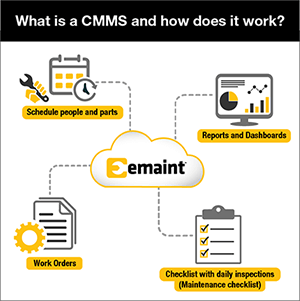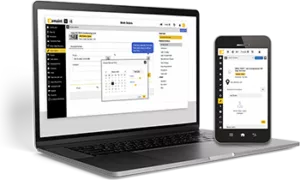By Michael Mills, Technical Solutions Manager at Fluke Reliability
Updated: October 9, 2025 • Originally Posted: 2021 • 10 min read
What is a CMMS?
A CMMS, or Computerized Maintenance Management System, is a maintenance software that helps teams manage work orders, analyze asset health, optimize inventory, report on KPIs, and more, centralizing your data and increasing efficiency. Maintenance and reliability teams use CMMS software to plan, track, and report on their work, saving time and eliminating paperwork. The heart of a CMMS software is its database, centralizing and organizing all your maintenance and reliability data. A CMMS is key to maintenance strategy in 2025, a time when global economic uncertainty and supply chain issues make defeating downtime more important than ever. FinancesOnline.com reports that 66% of maintenance professionals now use a CMMS, up 24% from five years ago.
What is a Computerized Maintenance Management System?
CMMS Diagram
How Does CMMS Software Work?
A CMMS software works by collecting and organizing maintenance data into a single, centralized database for your teams. Maintenance teams give the CMMS work order, equipment, and parts inventory data, and the software serves as a maintenance and asset management hub.
A CMMS database is founded on a Relational Database Management System (RDBMS) like SQL. Data is organized into normalized tables. It’s composed of workflows, asset hierarchies, schema templates, preventive maintenance logic, and more that comes together into seamless system.
Understanding CMMS solutions is easier by breaking them into four basic parts:
- An operator interface by which you navigate the data
- A database, typically cloud-based these days
- Administrative settings and workflows that govern how the CMMS works
- Reporting dashboards.
Example of How a CMMS Works
1) A motor breaks, and a passerby submits a work request via mobile. 2) A manager fires off a work order in response – booking a critical part and ordering more for next time. 3) A maintenance tech fixes the motor, snaps a photo, and closes out the work order. 4) Later that month, the manager pulls the reports on uptime – which, thanks to the CMMS, is at a record 99%.
CMMS Features
Work Order Management
A CMMS serves as work order management software. Teams can create, assign, and complete work orders and work requests, and track KPIs like work order completion. Getting work orders to techs instantly can save millions in downtime costs, reduce paper inefficiencies, and analyze costs.
Asset Management
What it is: Asset maintenance software like a CMMS solution is used to track assets, organized in hierarchies, and view detailed maintenance history. Maintenance managers don’t have to go searching for asset history details and can easily manage lifecycle, costs, and uptime.
Preventive Maintenance
A CMMS helps schedule recurring preventive maintenance work orders, or PMs, that include tasks, procedures, and parts. PMs can be scheduled by calendar or usage. PM scheduling allows teams to level-load schedules, avoid resource conflicts, and monitor on-time PM completion and PM compliance.
Parts Inventory Management
Book spare parts for work orders and attach them to relevant assets – A CMMS system can be used as a global parts inventory management software. Technicians can book spare parts for work orders, optimize inventory levels, share parts across sites, and analyze spending.
Reporting, Analytics, & Dashboards
CMMS reports and dashboard provide visibility into maintenance KPIs like uptime, MTBF, and work order completion. This provides managers with the ability to quickly see maintenance team performance and easily share enterprise-level reports with leadership.
Regulatory Compliance & Audit Dashboards
A CMMS can build audit dashboards to demonstrate compliance to regulations like 21 CFR Part 11, SQF, BRC, and ISO. Many CMMS platforms also provide security and tracking features like an audit trail, electronic signatures, and the ability to route work for approvals from safety, quality, or sanitation teams.
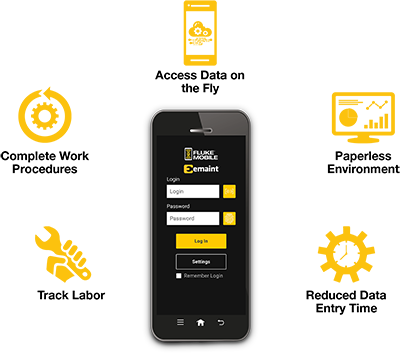
Mobile CMMS App
Mobile CMMS software allows users to complete work orders, view assets, and book parts on the go. Some CMMS apps allow offline work that syncs later, enabling work at remote sites. Mobile features include uploading photos and videos from the field and scanning QR codes to submit work requests.
Integrations
CMMS software integrates with core business software like ERP, BI, or SCADA systems to eliminate data silos and automate time-wasting tasks. CMMS integration gives maintenance teams key visibility into asset data, financial records, and much more, reducing inefficiencies.
AI & Predictive Maintenance
A CMMS maintenance software can be used for predictive maintenance by integrating with vibration sensors and AI-powered maintenance recommendations. Recent Fluke Reliability research states that 97% of maintenance professionals consider AI a viable solution to the manufacturing skills shortage.
EAM vs. CMMS: What’s the Difference?
The difference between CMMS vs. EAM is that CMMS software focuses on maintenance management, whereas EAM software is focused on the bigger picture of asset lifecycle management. A CMMS focuses on work orders, assets, parts inventory, and reporting. An EAM has those capabilities, but also tracks the acquisition, asset health, lifespan, and end of life (EoL) for assets.
The Journal of Industrial Information Integration describes the difference as follows:
What is EAM (Enterprise Asset Management) Software: “EAM aims to manage the asset’s lifecycle by enhancing its efficiency and reliability, reducing maintenance costs and risks.”
What is CMMS (Computerized Maintenance Management System) Software: “CMMS aims to assist in the planning, management, and administrative function required for effective and efficient maintenance.”
Benefits of CMMS Software
What are the Benefits of CMMS Software?
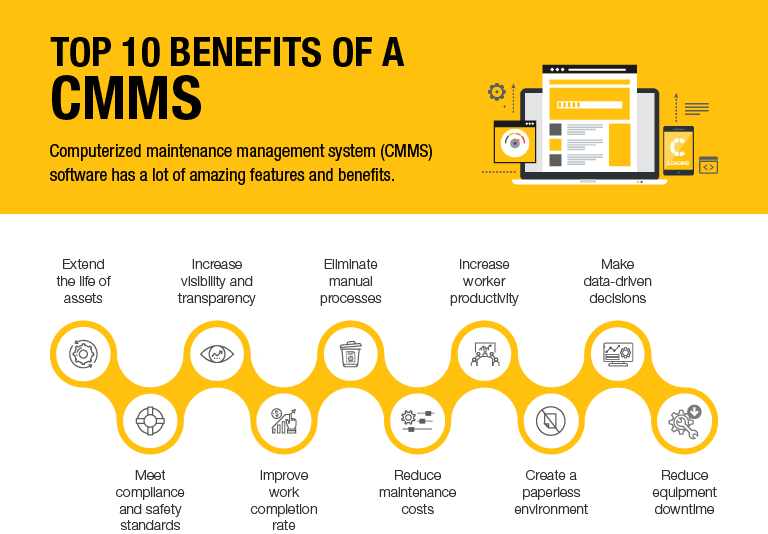
Boost Uptime
Teams can react to machine failures in real-time with a CMMS solution in the short term. And in the long-term, careful maintenance planning leads to sustained uptime and reliability.

Reduce Costs
CMMS reporting can identify cost savings in maintenance work, labor, and inventory purchasing. Teams with a strong work order and inventory system can prevent failures, saving on disastrous downtime costs.
Maximize Efficiency
A CMMS system increases efficiency with real-time work order management. Personnel can quickly find assets or parts and schedule preventive maintenance, so the team is free to do the work that matters.
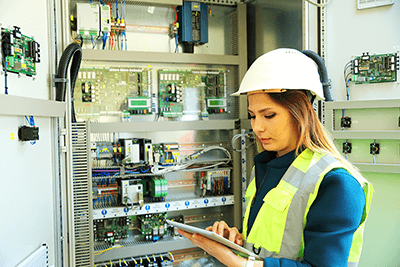
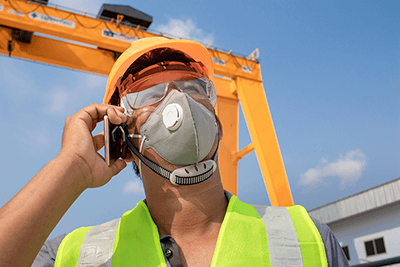
Mobile Workforce Management
Mobile maintenance management empowers techs to work in the field and offline, maximizing data entry quality. Mobile CMMS apps save techs an average of 44 minutes per day, according to SchorpGroup.
Healthy, Safety, Compliance
A CMMS software simplifies regulatory compliance and boosts health, safety and quality. Managers can reference audit trails, SOPs, compliant workflows, and audit dashboards.
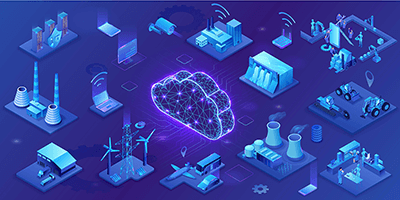
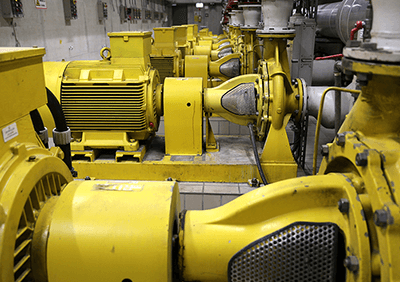
Automation
Automation saves time, reduces human error, and increases efficiency. With a CMMS solution, teams can automate everything from inventory reorders to work order assignments and compliance reports.
Improve Asset Visibility & Reliability
A CMMS system allows teams to track and manage asset health and lifecycle from pre-installation planning and engineering to decommissioning. This enables smarter maintenance planning.


Standardization and Consolidation
Maintenance standardization is a complex challenge, from best practices to data formats. A CMMS helps consolidate maintenance management across a global workforce.
Centralize Data
A CMMS is a source of truth for maintenance, giving the power to report on KPIs like work order completion, mean time between failures (MTBF), multi-site inventory levels, and much more.
What is the Best CMMS Software in 2025? The 5 Key Factors
Careful consideration is key when choosing a CMMS, as only about 25 – 40% of CMMS implementations are successful. The following are the five key factors to consider when shopping for a CMMS.
- Connected reliability: Businesses are not getting the maximum ROI from their CMMS if they can’t connect your tools and software in a maintenance ecosystem. Leading CMMS software integrates with tools, vibration sensors, AI recommendations, ERPs, SCADA, BIs, and beyond. Case Study Example: Asahi Kasei – 97% PM Completion, Power BI Integration
- Configurability: Expert maintenance software providers are experienced in industry-specific configurations, from PM procedures to 21 CFR Part 11 workflows.
- Mobile: The best CMMS software has a strong mobile app that is easy to use and empowers offline work in the field. Maintenance should be drive by real-time, actionable insights, always at the team’s fingertips.
- Global standardization: Leading CMMS platforms have decades of experience in managing global, multi-site CMMS implementation that delivers results in uptime, OEE, and production efficiency. Case Study Example: SKF – Standardization Across 81 Sites
- Trusted technology partner with decades of experience: The leading CMMS providers prepare their users for the future of maintenance, standardizing digital transformation for enterprise projects that span years.
Overall, the best CMMS solution is the one that best fits an organization’s particular needs – whether that’s optimizing 21 CFR Part 11 compliance, multi-site parts sharing, or something else specific to its operations. Have detailed conversations about those unique capabilities that matter the most.
How to Handle Common Objections to CMMS Maintenance Software
Objection: “We won’t end up using the CMMS.”
Answer: Ask your provider for their plans for training, adoption, and return on investment (ROI).
Objection: “Our data won’t be safe. IT will say no.”
Answer: Your CMMS program should be transparent about security, privacy, and compliance with standards like ISO 27001:2022 or GDPR. The golden standard is the Fluke trust center. It’s all there for your IT team to review.
Objection: “We don’t need a CMMS, we have an ERP. And it won’t work with our other software”
Answer: A CMMS platform like eMaint is designed for maintenance teams – ERP maintenance modules are often outdated and inefficient. Your team should also remember that the best maintenance software works brilliantly with your ERP, BI, BMS, and beyond.
The 3 Secrets to Seamless CMMS Implementation
- Getting leadership buy in by demonstrating return on investment (ROI) with content like case studies. Example: How Johns Hopkins achieved 92% uptime.
- Getting the organization ready. Teams should move away from run-to-failure and towards proactive maintenance. Strong records of your team, assets, parts, and work orders are key.
- Investing in training early on; early adoption is the key to long-term ROI.
The Verdict: The Best CMMS Software
eMaint is the best CMMS and EAM software when it comes to functionality, implementation, support, and software Return on Investment (ROI).
“eMaint has been a great system to use. Very user friendly and the support teams are amazing!” – Lisa T., Field Service Engineer. ★★★★★
“Hands down, the best CMMS I have ever used or seen.” – Michael R., Maintenance Supervisor. ★★★★★
“Simply the best CMMS.” – Carlos M, Preventive Maintenance Coordinator. ★★★★★
Explore eMaint success stories to see the Fluke software in action.
Getting Started with a CMMS
Ready to learn more about how you can save time, maximize uptime, and cut costs with a CMMS platform? Reach out below to speak to a CMMS specialist.
About the Author
Michael Mills is a Technical Solutions Manager at Fluke Reliability, leading a team of solutions engineers dedicated to innovation and excellence in applying maintenance, reliability, and operations (MRO) strategies to CMMS and EAM implementation. With over a decade of experience in Enterprise Asset Management (EAM), Reliability Centered Maintenance (RCM), Condition-Based Maintenance (CBM), Integrated Condition Monitoring (ICM), Mills is an authoritative thought leader in the realms of asset management, mobile CMMS deployment, and IIoT monitoring.
CMMS Frequently Asked Questions
Who Uses CMMS Software?
Maintenance teams of every size use computerized maintenance management software. Users can be anyone from entry-level technicians to maintenance managers, senior leadership, or corporate owners. The flexibility of a CMMS means it can be used across global, multi-site companies just as well as in smaller organizations with a single location.
Computerized maintenance management system software is used across a wide variety of industries:
-
- Automotive manufacturing
- Life sciences
- Hospitality (hotels, resorts, apartment complexes, etc.)
- Oil and gas
- Energy
- Chemical
- And many more
How Much Does A CMMS Cost? What if I Don’t Have Enough Money for a CMMS?
Your maintenance software will range in costs dependent on the number of facilities you are managing and your needs. eMaint is configurable enough to have a strong software package for every price range.
What Is the Return on Investment (ROI) of a CMMS?
Most companies want to know what kind of return on investment (ROI) they can expect after implementing a CMMS. That’s a fair question, but it’s hard to answer because every company starts from a different place in its maintenance journey. The software will have both an initial cost and an ongoing cost, but the best CMMS software has excellent potential for a strong ROI.
Here are some key questions to think about when calculating the ROI of a CMMS:
- How much money could you save by streamlining inventory? A CMMS can keep track of inventory, share inventory between sites, and help cut unnecessary inventory costs by giving your team a clear picture of what’s on hand and where it’s located.
- How much time do your technicians spend on administrative tasks like paperwork instead of actual maintenance? Since maintenance history is documented in a CMMS, record-keeping is streamlined, giving your technicians more time to perform maintenance tasks.
- How much time do technicians or administrative personnel spend gathering data for audits? With a CMMS, audit-ready reports are ready with just a few clicks, saving countless hours of digging through paper records or sifting through spreadsheets.
- How often are preventive maintenance tasks missed or delayed? With a CMMS, these can be scheduled and assigned automatically, so PM tasks are never missed. These both extend asset lifespan and reduce downtime, saving money over the long term.
- What systems can a CMMS replace? If you’re juggling multiple types of software for tasks like work order management, document control, or inventory tracking, consolidating into one type of software can cut costs right out of the gate by replacing multiple types of software with one easy-to-use CMMS.
These questions highlight just some of the money-saving potential a CMMS can have across an organization.
How Does a CMMS Support…
Preventive maintenance: scheduling out PM work orders and enabling PM checklists.
Asset history: providing a comprehensive asset hierarchy that shows maintenance history, including work orders, parts, and notes.
Parts inventory: simplifying parts inventory optimization with easy management, reordering, and cost reporting.
How Does CMMS Data Storage Work?
CMMS software is essentially a database that contains all information about an organization’s maintenance and assets. It works by collecting and organizing data about work order creation and assignment, tracking, reporting, asset status, and more. Then, it puts that information into a single centralized database that different departments can access and use to streamline their processes.
Cloud-Based vs. On-Premise CMMS
There are a range of maintenance management system solutions on the market, but they are generally divided into two types: on-premise or cloud-based CMMS. But which one is right for your operation? It depends.
On-premise CMMS solutions usually involve a higher upfront cost due to the expenses of purchasing and installing the necessary infrastructure to support the CMMS. They also require more in-house expertise.
Cloud-based CMMS solutions are subscription-based and tend to cost significantly less since you don’t have to purchase hardware to keep on-site or hire in-house IT professionals to handle installation, maintenance, and upgrades. They are also easier to scale. Most cloud-based CMMS platform providers issue free updates for existing users and include features to protect your data.
What is the Difference Between ERP and CMMS?
Enterprise Resource Planning (ERP) software is focused on purchasing, accounting, and the bigger picture of resource planning across and organization. A CMMS maintenance software is focused on managing maintenance and reliability activities, and can gather asset data to enable condition based maintenance.
Can SAP Be Used as a CMMS?
Systems, applications, and products (SAP) is not a CMMS system. It is a type of ERP software package. Although there is some overlap between CMMS and ERP, they do not have the same purpose.
The CMMS was designed to streamline and optimize maintenance operations. ERP, on the other hand, manages a much broader range of business functions, including finance, human resources, and customer relations.
Integrating your CMMS with a SAP or other ERP can be very useful.
What is a CMMS Software Mobile App?
A mobile CMMS is a smartphone app that simplifies maintenance management on the go.
Mobile CMMS apps connect your maintenance team, reduce labor, and help maximize your asset uptime. Communication is streamlined and your team can work in the field, simplifying maintenance management.
The eMaint CMMS app allows you to manage work orders, submit work requests via QR code, book spare parts, track work hours, and much more — all from a smartphone or tablet.
A premium mobile CMMS like eMaint gives you a wealth of features:
- Work offline
- View and update work orders
- Upload photos and documents
- Log work hours
- Access data from Fluke multimeters and other tools
- Get push notifications for timely alerts
- Manage assets and equipment
- Scan QR codes on assets for info or submitting work requests
- Track changes with an audit trail
- Much more!
A mobile CMMS, powered by a world-class CMMS like eMaint, breaks down barriers in industrial data and gives your team vital information in the field.
What Kind of CMMS Training is There?
Leading CMMS software providers have many different kinds of CMMS training available. They may have recorded webinars or courses you can take to learn at your own pace, making it easy to pick and choose what you would like to learn about. They may also offer on-site training customized to your specific needs, bringing your team up to speed quickly so you can start benefiting from your new CMMS even faster. Continuing education like live webinars and multi-day training workshops can help you harness the power of new updates and help you get even more out of your CMMS.
Can I Get CMMS Certified?
Top computerized maintenance management system software providers will also have CMMS certification programs . This helps teams increase adoption and use, but also provides incentive for workers. Certification is the mark of a maintenance professional.

